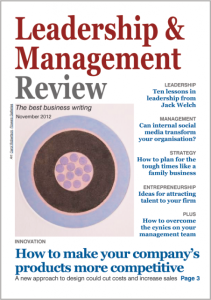Negligible Risks – Deviation #1 in ISO 14971
This blog reviews the treatment of the negligible risks, which is deviation #1 within the EN ISO 14971:2012 European normative risk management standard.
In 2012, the European National (EN) version of the Medical Device Risk Management Standard was revised, but there was no change to the content of Clauses 1 through 9. Instead, the European Commission identified seven content deviations between the 14971 Standard and the requirements of three device directives for Europe. This seven-part blog series reviews each of these changes individually.
Treatment of Negligible Risks in ISO 14971
The first deviation is specific to the treatment of negligible risks. In Annex D8.2, the ISO 14971 Standard indicates that the manufacturer may discard negligible risks. However, Essential Requirements in the three device directives require that “All risks, regardless of their dimension, need to be reduced as much as possible and need to be balanced, together with all other risks, against the benefit of the device.”
Common Misinterpretations
One of the most common mistakes is to confuse the concepts of hazard, harm, and risk. Each of these terms is defined in the ISO 14971 Standard in section 2, but the common mistake is to think that the European Commission is saying that 100% of the hazards you identify need to be reduced as much as possible.
The intent is to require manufacturers to reduce risks, rather than hazards. The first step of the risk analysis process involves identifying hazards. Still, some of these hazards may never result in harm, due to risk controls that are inherent to the design your company has chosen. Also, the severity of harm that a hazard may present could be so low that it may present no risk to the user or patient.
The best practice in risk management is to identify as many hazards as possible at the beginning of the risk analysis process. Still, then these hazards must be sorted into those hazards that will be analyzed for risk. One of the common phrases used in training is: “It is better to estimate the risk of 10% of 1,000 hazards than it is to estimate 50% of 100 hazards.”
If you follow the logic behind the phrase above, your team will need to estimate risk for 100 hazards, rather than 50 hazards. Your risk analysis team will also need to document the rationale behind the categorization of hazards.
Categorizing Hazards
If a hazard is associated with adverse events in the Manufacturer and User Facility Device Experience (MAUDE) database for your device or a similar device, then you need to ensure that the risk associated with that hazard is assessed and there are adequate risk controls. This is also true for any hazard associated with a customer complaint that your company anticipates. Any hazard that presents a high potential severity of harm should also be included in your risk analysis. However, if a hazard is entirely eliminated by the design of your device, then you do not need to include it in the risk analysis.
I recommend writing a hazard identification report that includes all the hazards that were identified. This report should also categorize the hazard. You only need two categories: 1) hazards to be analyzed for risk, and 2) hazards that do not require risk analysis. You need a rationale for each risk that you do not perform risk analysis for, and you need traceability to risk controls and the risk-benefit analysis for each hazard that you do analyze.
Example of a Rationale for Not Analyzing the Risk of a Hazard
About eight years ago, the United States Food and Drug Administration (USFDA) issued an alert cautioning physicians to avoid the use of hemostatic agents near the spinal column, due to the potential hazard of paralysis caused by the swelling of a hemostatic agent as it absorbs the blood. My employer, Z-Medica, quickly received many customer inquiries asking about the safety of QuikClot near the spinal column. I was able to quickly respond that there were zero risks of QuikClot causing paralysis because that particular hemostatic agent did not swell. Instead of absorption, the product adsorbed blood and did not change in size or shape during the adsorption process.
Impact of Deviation #1 about “Negligible Risk”
As companies become aware of this deviation between the 14971 Standard and the Essential Requirements of the device directives, I believe teams that are working on risk analysis and people that are performing a gap analysis of their procedures will need to be more careful about which hazards are identified in their risk management reports. The burden of showing traceability from hazards to risk controls and risk-benefit analysis is substantial. Therefore, it is important to be systematic about how hazards are identified and to provide a clear justification for any hazards that are not included in the risk analysis.
The common phrase that has been used in risk management training classes should be reconsidered in light of feedback from the European Commission. Maybe a better phrase would be: “It is better to estimate the risk of 10% of 200 hazards than it is to estimate 50% of 20 hazards. However, it is important to provide a clear justification for any hazards that are not included in the risk analysis.”
If you are interested in ISO 14971 training, we are conducting a risk management training webinar on October 19, 2018.
Negligible Risks – Deviation #1 in ISO 14971 Read More »



